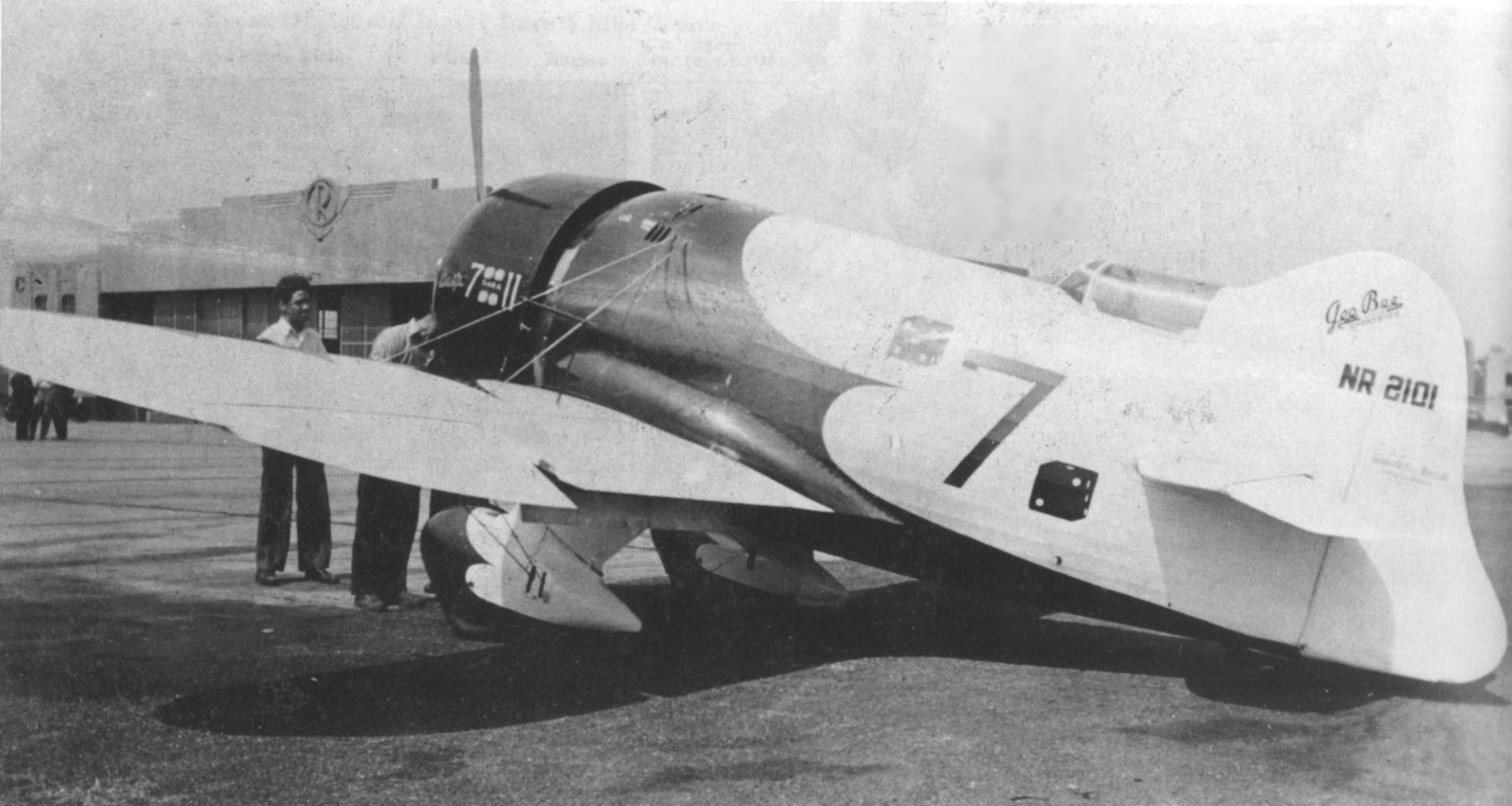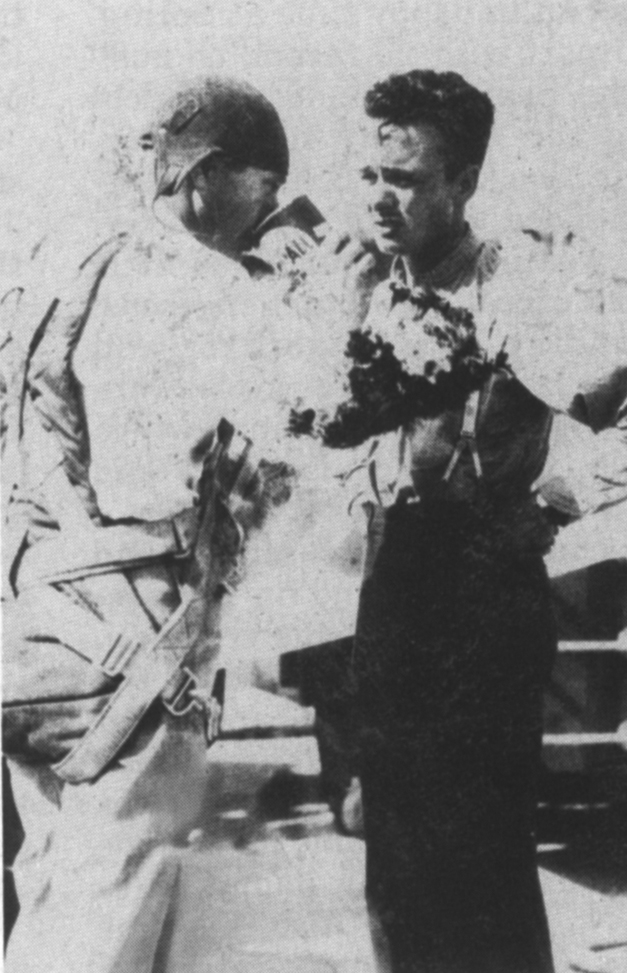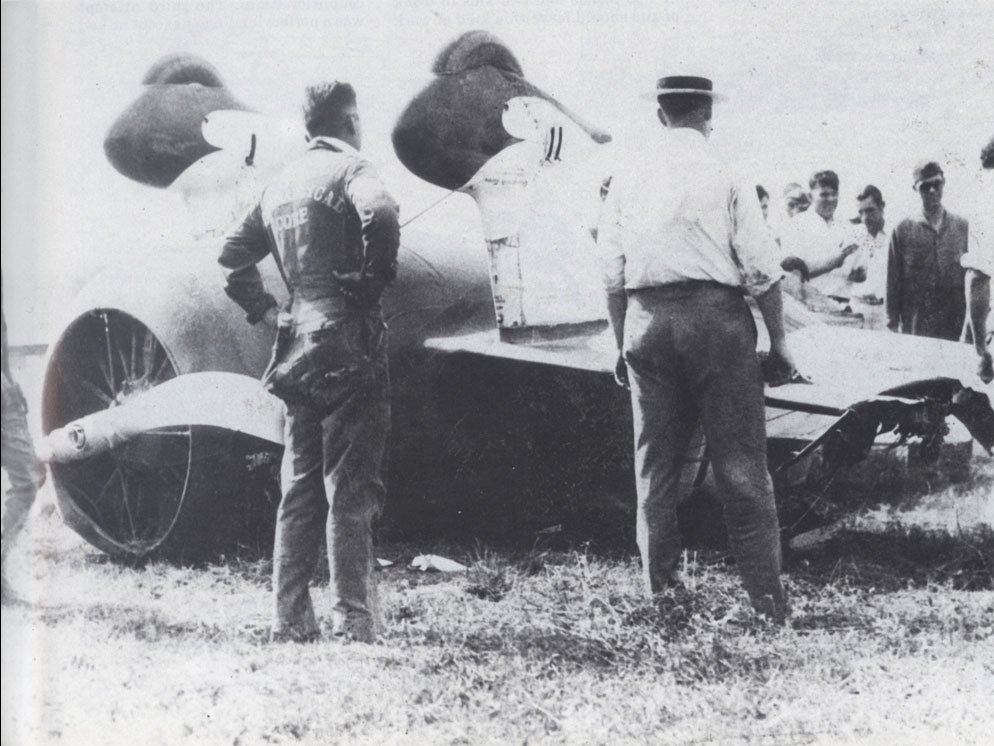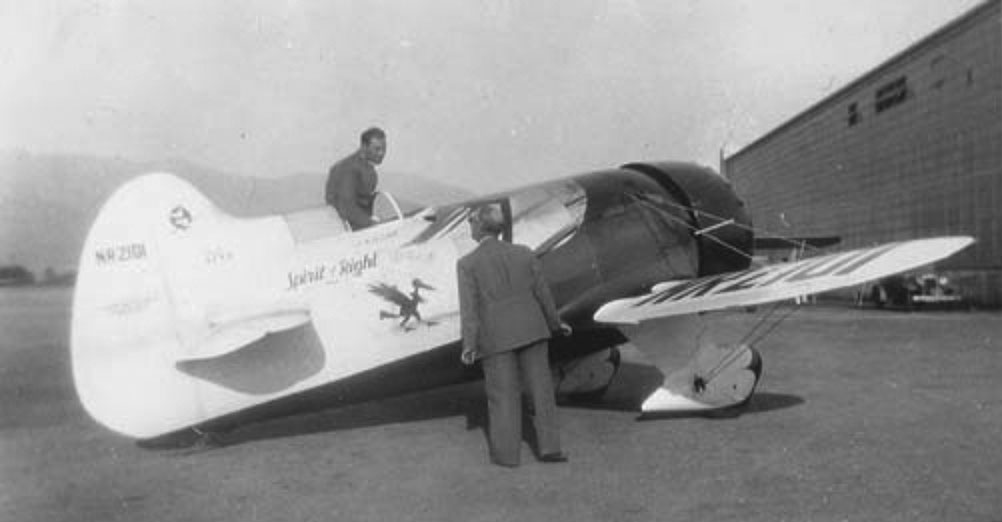7 & 11

The “new and improved” Gee Bee R-2, with more rudder area and Wasp Sr. powerplant. Flown by Russell Thaw in the 1933 Bendix race.
The Gee Bee R-1 and R-2 racers were aptly numbered—every flight in them was a crap shoot. After returning them to Springfield Jimmy Doolittle and Lee Gehlbach never flew them again. As Gehlbach put it, “We believed that we had used up a considerable portion of our earthly share of luck.”
For the ’33 Nationals both planes received larger rudders. The R-2 was fitted with new, larger wings, with flaps for reduced landing speed, and the R-1’s Wasp Sr. powerplant. The R-1 got a new, 900 hp. Pratt & Whitney Hornet.
It took a recovered Russell Boardman some time to get his pilot’s license renewed (he finally got approval direct from President Hoover), but he was ready to fly the R-1 in the ’33 Nationals. Russell Thaw replaced Gehlbach in the R-2.

Russell Boardman (left) has words with Russell Thaw just before taking off for the last time. July 1, 1933,
When the time came for the Bendix Trophy Race Boardman ran the R-1 some 50 feet off the side of the runway before getting airborne—and returned a half hour later to make sure nothing was wrong. (Later the Granville organization maintained this first flight was simply a flight check.) Thaw had already taken off. Using more gas than expected, he landed at Boardman’s refuelling stop in Indianapolis to filch a little of his fuel. But one of the R-2’s gear gave out on landing and the R-2 ground-looped, lightly damaging a wing tip. When Boardman got in they traded some possibly angry words; on taking off again Boardman pulled up too soon. The R-1 stalled, torqued over inverted and slammed down on top of him at 120 mph. Boardman died the next day of massive head injuries.
Thaw declined to finish the race. The Bendix went to Roscoe Turner’s Wedell-Williams. The only Gee Bee to fly in the ’33 Thompson was a Model Y Senior Sportster, piloted by Granny Granville himself to fifth place for $375.
Jimmy Haizlip returned the R-2 to Springfield and agreed to fly it later that year in the Chicago American Air Races, but in his first attempt to land without flaps snagged a wing and cartwheeled down the runway. Incredibly, he walked away, but the R-2 was a write-off.
The Granvilles lengthened the R-1’s largely undamaged fuselage, added yet more rudder, and mated it to the R-2’s original wings. Roy Minor, who’d taken the Howard DGA-4 to fourth in the ’33 Thompson, found the monster Gee Bee—numbered 7 and nicknamed “Intestinal Fortitude”—a big step up from the nimble little “Mike.” The day before he was to leave for Chicago, Minor had to make three attempts at a landing. (The Gee Bees had a tendency to air-cushion and “float” on nearing the ground.) On the last he came down too fast and too far down the runway, went off in wet grass and hit a drainage ditch. The Gee Bee flipped completely over a chain link fence and, miraculously, came down on its gear. The second pilot in weeks to survive a crash in a Gee Bee R, Minor uttered a one-word expletive and quit on the spot.
In February 1934 Granny Granville himself was killed, crashing a Model E Sportster. That year Granville Bros. Aircraft went bankrupt. Its assets were sold off, including the rebuilt “R-1/2” Super Sportster, built from the R-1’s fuselage and R-2’s original wings. Over the surviving Granville Brothers’s objections, it was purchased by race pilot Cecil Allen. He modified it heavily and on Friday, August 30, 1935, lifted off from Burbank at 1:30 AM to start the Bendix, disappearing into a thick fog. They found his body in the wreckage, just two miles away; it had been his fate to fly the Gee Bee into history.

